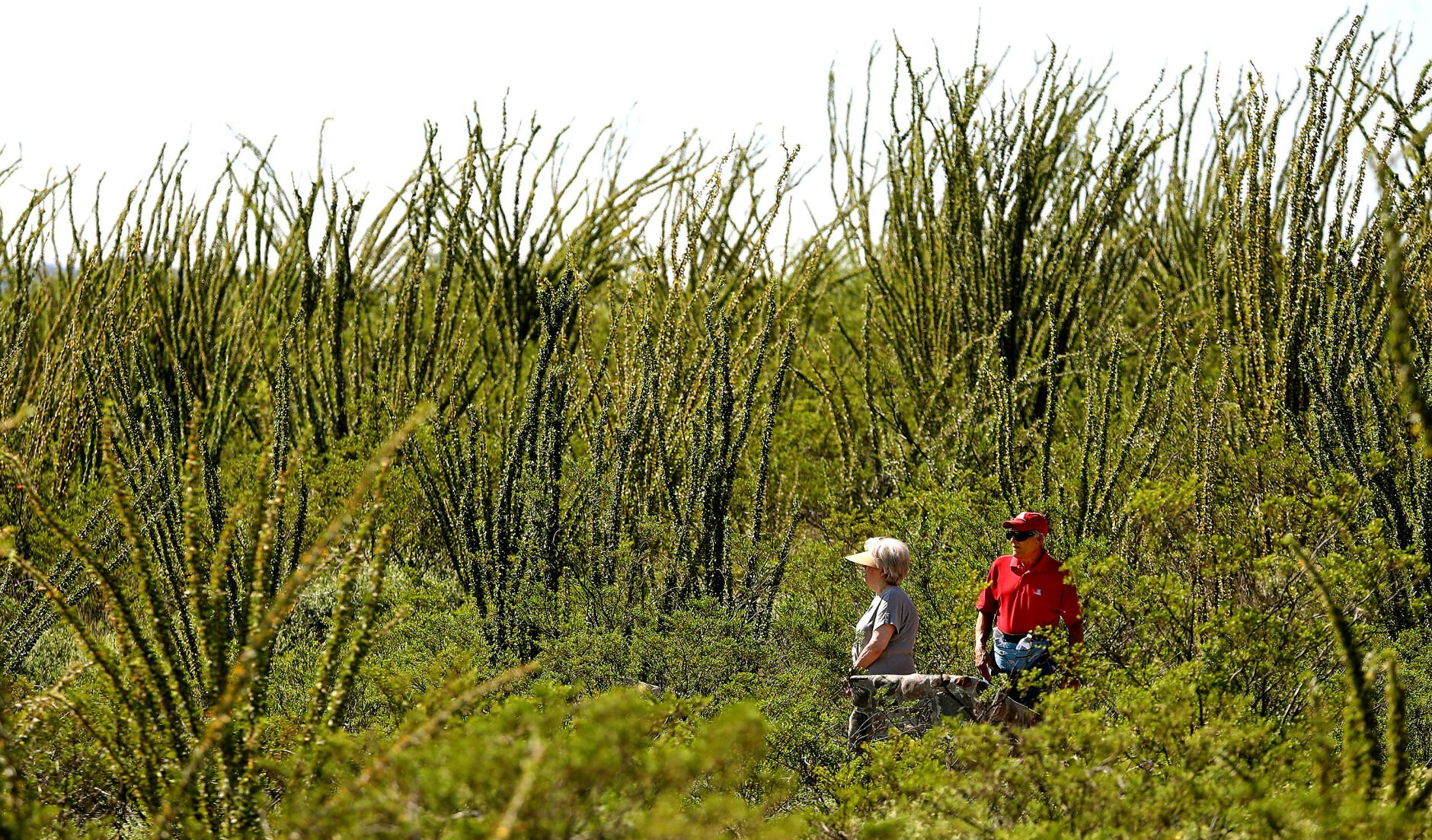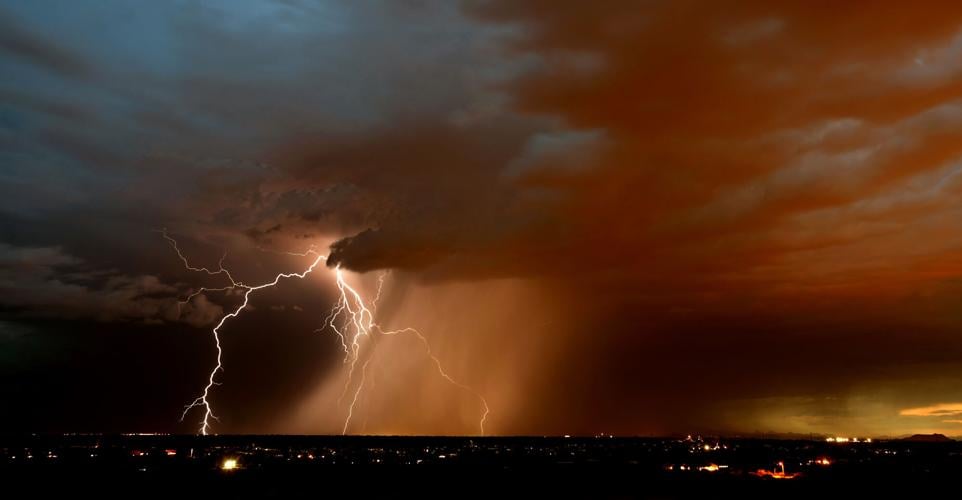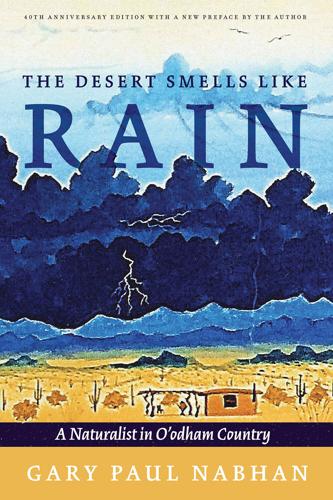With the first, fat drops of summer rain, the sun-bleached desert exhales a perfumed breath of pure relief.
But where does the intoxicating scent of a monsoon storm actually come from?
There’s a lot more to it than just wet earth and creosote bush.
At least 60 different aromatic plants may contribute to what people think of as “the smell of rain” in the Sonoran Desert, according to a new paper by a trio of researchers led by renowned ethnobotanist and author Gary Paul Nabhan.
“Our analyses suggest that a suite of memorable fragrances are emitted from a diversity of desert plants in the Arizona Uplands just before or during the summer rains,” the paper states. “These may be likened to an ‘orchestra’ of fragrances that are inhaled ‘in concert’ to generate a sensory effect greater than the sum of its parts.”
The study represents the most comprehensive effort yet to identify the actual biochemical components of something that seems to stir a strong, sometimes spiritual response in desert dwellers.
Even the scientific word for the earthy smell of rain on dry ground is tinged with reverence: Australian biochemist Richard Grenfell Thomas coined the term “petrichor” in 1964 by combining the ancient Greek words for stone and the ethereal fluid from the veins of the gods.
“It’s easier to describe how it makes you feel,” said study co-author Tammi Hartung, a Colorado-based herbalist and organic farmer with more than 40 years of experience working with plants. “It’s a peaceful smell. It’s a smell that’s invigorating. It’s a smell that inspires you to have hope, especially for people who are in agriculture or horticulture in that part of the world.”
“Feels so good”
Nabhan loves the smell so much he jokes about wanting to “sprinkle the wet dirt on a sundae” and eat it.
“There’s this feeling of elation and excitement and restfulness that hits with that storm front and that rain,” he said. “My whole body just feels so good. It’s one of the most powerful feelings I feel all year.”
The new paper represents a return to familiar territory for Nabhan, who borrowed a phrase from a Tohono O’Odham boy for the title of his first book: “The Desert Smells Like Rain.”
Forty years later, Nabhan is back to find out why.
“I feel so hilariously geeky to be doing this,” he said with a laugh.

Gary Paul Nabhan’s nature-writing classic gets a 40th anniversary update later this year.
The researchers started by posing the question to about 50 of the Sonoran Desert’s best botanists in Arizona and Mexico. Almost immediately, Nabhan knew they had struck a chord.
“Usually people are bored senseless by my emails, but within seconds people were just rolling in with their responses,” he said.
The resulting list of 68 aromatic plants includes several desert natives that produce the same compounds — known as volatile oils — used in therapeutic treatments along the Pacific Coast of Asia.
According to the paper, dozens of scientific studies have documented real health benefits from simply walking along a wooded path and taking in the aromas of certain plants and living soils, a practice known in Japan as “forest bathing.”
As Hartung put it: “People do all kinds of things for their health. Sometimes all we need is to just be outside in nature and breathe that in.”
A complex smell
Though more study is needed, the new paper suggests the volatile oils in some local desert plants could at least briefly help improve sleep patterns, stabilize emotional hormones, enhance digestion, heighten mental clarity and reduce depression or anxiety.
In recent years, various groups have organized “desert bathing walks” at Saguaro National Park and elsewhere.

Lighting strikes as a storm unleashes rain southwest of Tucson in July 2021. For a long time, ethnobotanist Gary Nabhan says, experts seemed to be split into two camps: those who credited creosote bushes alone for the smell of rain, and others who believed it wafted up from the dirt itself. But the smell we associate with rain is far more complex than that.
“This is more than wishful thinking,” Nabhan said.
As for the plants, Hartung said they depend on volatile oils for sunscreen and to help retain water, repel pests and attract wildlife necessary for pollination or seed dispersal.
“It’s not for our benefit, it’s for the plant’s own survival,” she said.
The paper by Nabhan, Hartung and Eric Daugherty appears in the latest edition of “Desert Plants,” a 43-year-old journal published by the Boyce Thompson Arboretum near Superior.
For a long time, Nabhan said, experts seemed to be split into two camps: those who credited creosote bushes alone for the smell of rain, and others who believed it wafted up from the dirt itself — namely from biological soil crusts formed by highly specialized mosses, lichens and photosynthetic bacteria.
He said creosote and soil are key ingredients to be sure, but the smell we associate with rain is far more complex than that.
Hartung said her favorite notes from a Sonoran storm include the violet scent of desert willow, the sweetness of mesquite and the minty, floral aroma of verbena, which reminds her of something she would drink as tea or toss in a salad.
Summer heat can intensify the smells, before the wind and rain comes along to disperse them like a blast from a can of aerosol.
Nabhan said he worried that studying the phenomenon might take some of the wonder out of it. After all, desert rain is one of life’s simple pleasures, he said. “We don’t have to analyze it to enjoy it.”
Thankfully, Nabhan said, there is no one answer to the question of what makes the desert smell like rain, because no two monsoon events ever smell precisely the same.
The scent varies subtly based on differences in plant communities, elevation, timing, soil composition and past weather. A downpour after extended drought might produce a different aroma than light rain in a wet year.
“It’s not like we’ve solved anything. We’re just pointing in the direction of more interesting research,” Nabhan said. “The mystery is not going to go away. It’s bigger than all of us.”






